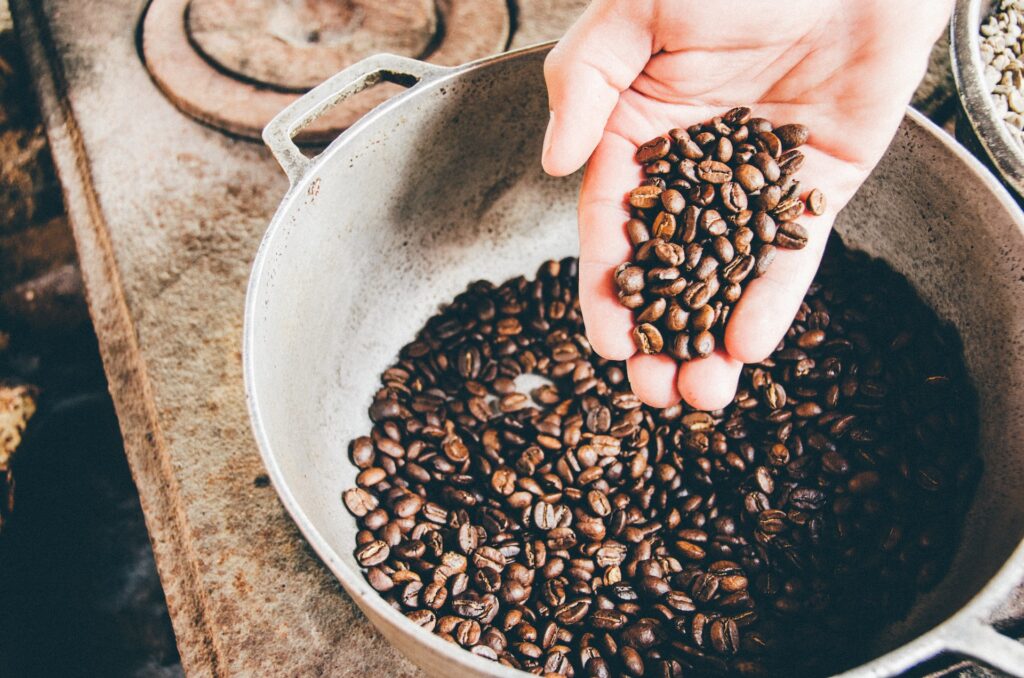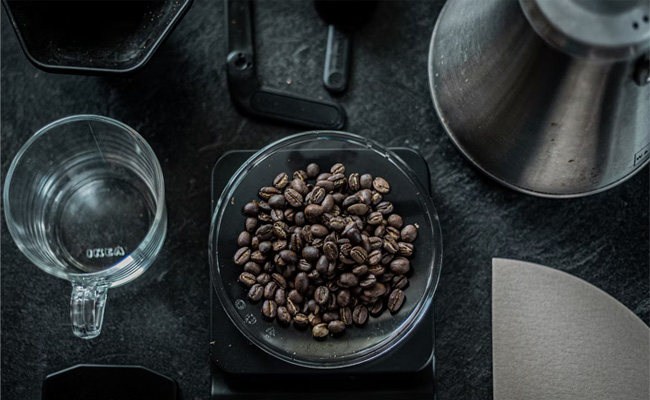Home Coffee Roasting: A Guide to roasting the best coffee
- What you’ll need to roast your own coffee
- The different types of roasts
- Roasting times and temperatures
- How to cool and store roasted coffee beans
- Tips for the perfect cup of roasted coffee
What you will need for home coffee roasting

In order to master home coffee roasting, you will need a few things. First, you will need green coffee beans. These can be purchased online or at some specialty stores. You will also need a roasting pan or an air popcorn popper. Finally, you will need a cooling method such as a metal colander.
There are four different types of roasts: light, medium, dark, and espresso. The roast you choose will depend on your personal preference.
Roasting times and temperatures can vary depending on the type of roast you are making. lighter roasts will take less time and be roasted at a lower temperature, while darker roasts will take longer and be roasted at a higher temperature.
After roasting, it is important to cool the beans quickly to stop the roasting process. This can be done by placing them in a metal colander and running cold water over them. Once cooled, store roasted coffee beans in an airtight container.
For the perfect cup of home roasted coffee, be sure to use fresh beans and grind them just before brewing. Use filtered water and let the water come to a near boil before adding it to the grounds.
Home Coffee Roasting
1. The Taste of the Roast is in its Smell: Green Coffee beans emit a characteristic “grassy” smell as they turn yellowish few minutes after heat subjection. With further roasting, the beans begin to smoke, like coffee, giving it its peculiar smell and taste.
2. Cracking Sound Gives Good Clue about the Roast Stages: Further roasting gives off a unique crack sound as the bean loses water and changes structure with rising temperature. Listening for this sound can be a fantastic clue to determine desired roasts.
3. Length of Roast Determines Color and Flavor of Beans: Since bean structure, flavor and color graduates with each upward step in temperature, and increasing time, it is not unexpected to observe the original green bean character turn dark, with a stronger flavor, at the end of the process.
Steps to Home Coffee roasting
Whatever is the technique employed, the instrument used or even the time set, roasting coffee at home all bores down to achieving significant desired flavors.
1: Choose a Roaster: Depending on budget, technique, time or batch size, it can be done in an oven, a skillet, a stove top popper, or more specialized equipment.
2: Select Coffee Beans: The original pre-roast character of the bean determines the flavor and nutritional quality of the coffee. Although green coffee beans come highly recommended, many others have equally satisfying benefits.
3: Choose the Desired Roast Process: Since the flavor of coffee depends on the process and invariably the roasting time, understanding the different stages will help control the flavor of coffee.
Understanding the Roast Process
Yellowing – Few minutes after the green bean is subjected to heat, it turns yellowish and emits a grassy smell.
First Crack – Soon enough, a crack sound – an audible cracking sound is heard as the real roasting sets in. The sound is an acoustic signal, calling one’s attention to what stage the roast is.
First Roasted Stage – Also known as a City Roast, this stage, determined by sight and smell, can be considered complete depending on desired taste.
Second Crack – As the heating progresses, a second crack, often more distinct than the first, occurs. This is called a Vienna Roast.
Darkening Roast – As the roast progresses, the bean assumes a very dark tone, and the smoke is more pungent as sugars burn completely. This gives a French roast.
Home Roasting Coffee: Cooling the Beans
An important step in roasting coffee beans is often overlooked. Cooling the beans. There are a few different methods for cooling coffee beans, and each has its own benefits. When cooling your coffee beans, there are a few things you should avoid, which will be covered below.
The three most common methods for cooling coffee beans are air cooling, water cooling, and cryogenic cooling. Air cooling is the most common method and is also the easiest and cheapest method. Water cooling is less common but more effective than air cooling. Cryogenic cooling is the most expensive and most effective method but is not practical for most people. Learn more about each method below.
Air Cooling: Air Cooling is the most common method used to cool coffees post-roast. All you need is a fan and a place to let your roasted coffees sit and cool undisturbed for about 20-30 minutes. You can use a tray, colander, or even just pour them out onto a countertop; whatever works best for you as long as there’s good air circulation around all of the beans. The only downside to this method is that it can take longer to cool your coffee this way depending on the size of your batch, up to half an hour or more.
Water Cooling: The second method commonly used by roasters to cool their roasted coffees is water cooling, which as the name suggests involves using water to cool down your coffee much faster than air alone can. This method requires two basins filled with water at different temperatures; one basin should have room-temperature water while the other should have ice-cold water.
Once your coffees have finished roasting, quickly transfer them into the room-temperature water basin using a colander or other similar strainer and let them sit for 30 seconds before moving them into the ice water basin for another 30 seconds. After this final 30 seconds, remove your coffees from the ice water and place them on a towel or drying rack to finish drying off any remaining moisture; they should now be cooled and ready to store or brew!
Cryogenic Cooling: Cryogenic cooling is another effective way to rapidly cool roasted coffee, though it requires special equipment that most people do not have access to and can be quite expensive. This method works by using extremely cold liquid nitrogen (-320°F/-196°C) to flash-freeze your freshly roasted coffees almost instantly; this helps preserve their flavor and prevents them from over-cooking as they would if left to air-cool.
